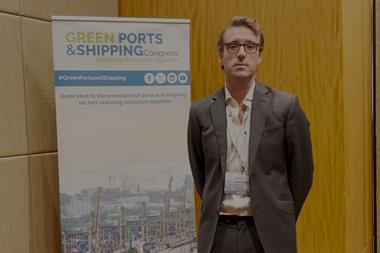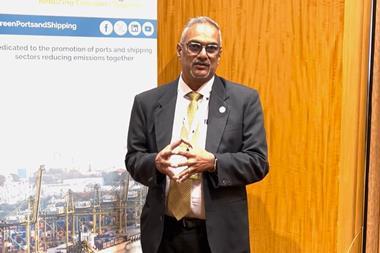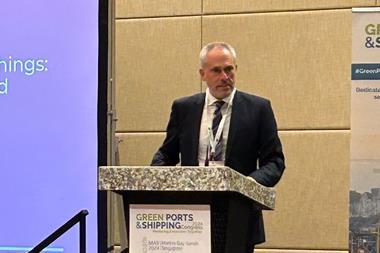”In five or six years, every bit of capital allocation will have to take into account climate sustainability goals” - heard at Green Ports and Shipping Congress

Sourcing green financing is getting easier to launch energy transition plans for shipping and port operations globally, though navigating regional guidelines and regulations is still tricky – that was the message from speakers in the Green Finance session of Green Ports & Shipping Conference today, 8 May.
To start with green finance assets reached $35.3 trillion in 2020, according to Pang Toh Wee, senior consultant, at Maritime Advisory DNV.
He continued “There are sustainability-linked loans, and sustainability-linked bond principles in place and varied standards for green finance, sustainable finance, and transition finance”.
But green finance norms vary across shipping. and projects and are normally aligned to IMO, GHG goals, with sharp regional variations from the European Union (EU) to Southeast Asia.
One aspect is that finance frameworks and questions still exist on what is “green” and what is not “green” for the maritime industry. To address such issues 34 ship financing banks signed the Poseidon principles which represents 80% of the global ship finance portfolio.
Elsewhere, finance heads in Southeast Asia developed an ASEAN Taxonomy Board to create a common sustainable finance language on criteria for the 10-nation economic bloc - Eugene Wong, chief executive officer, at the Sustainable Finance Institute Asia.
“In five or six years, every bit of capital allocation will have to take into account climate sustainability goals,” Wong said.
In Europe, decisions on shipping finance are complex, with banks using a mix of flexibility, close reading of banking regulations and launching industry initiatives, following EU criteria and transition plans by companies, said Jens Van Yperzeele, director, Sector Coverage Transport & Logistics – Shipping at Dutch bank ING.
Other areas draw upon the non-governmental sector for advice and insight.
There is a push in the philanthropic world to tackle how to make systematic change in areas like decarbonizing shipping, said David Albertani, chief executive officer, Catalytic Finance Foundation, which is funded in part by the Bloomberg Foundation.
“In shipping and ports, we look at cargo handling, shore power, renewable energy, and decentralized generation - along with operational efficiencies, Albertani said.
But many smaller ports do not have a clue how to tackle energy transition and need grants and technical expertise and require a lot of capacity building, he added, which the Catalytic Finance Foundation provides, adding that “concessional funding will be key to attract private capital into projects.”
The in-depth discussion on the crucial area of green finance, ably moderated by Jackie Spiteri of Sustainability ESG, brought the first day of the conference to a close.
Green Ports and Shipping continues tomorrow, 9 May.








